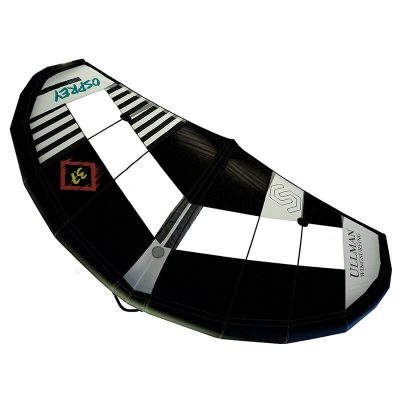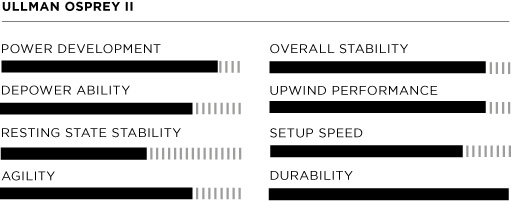

When you purchase gear through links on our site, we may earn a small commission. Here’s why you can trust our tests and our affiliate partner.

Amongst one of the many great things about the new world of foiling and wingsurfing is that the whole thing is pretty ‘democratizing’. Unlike in, say, kitesurfing or windsurfing, you don’t need a huge range of 15+ products to become a respected brand, you just need good products. So it has been great to see brands who have never been on our radar sending kit our way to test, and it has been great to see how much of this kit is actually very good… A case in point is Ullman, a South African brand with a 50-year heritage in sailmaking and more recently in kitesurfing, who have now turned their hand to the world of wingsurfing.
They currently offer four wings, and the Osprey II is their ‘all-rounder’ designed to be accessible for all levels of riders and for all riding styles. In terms of construction and – straight out of the bag – this feels like a very solid and well-engineered wing. It has a window which runs the length of the wing, so needs to be rolled, although the window is relatively narrow so the wing can be partially folded and fits into a shorter bag so its less cumbersome than a fully rolled wing. Ullman have worked hard on the leading edges of the wings, with less V in the central two segments of the leading edge, which then increases across the remainder of the leading edge – the aim here is to smooth airflow across the center of the wing and to minimize the amount of lateral movement of the wing.
One of the strongest features for us on the wing was the handles, these are “UHMWPE covered with soft internal cushioning” and they are exceptionally comfortable, probably the most comfortable we have used. If you are winging for any length of time, or for beginners who tend to be scrabbling to grab handles, this does matter and equals a more comfortable and enjoyable session. There are five main handles, and two Y handles. These are well placed, and we found that we shifted between the two back handles for general use (we had some super gusty 35 knot plus conditions), with the second handle providing perfect balance for one handed powered-up handling.
The wing has a medium aspect ratio with relatively pulled in wingtips. We felt that it handled more like a smaller wing with the tips not catching as easily as they tend to on a wing of this size. Overall it was easy to flip the wing and get it into position, and, once up and riding, the less experienced wingers had few problems with catching the wing tip. The Osprey is a super rigid wing – noticeably more so than some lighter weight wings – and this translates into quick power delivery and a very ‘tuneable’ feel. You can ease the power in and this immediately translates into power. In steady conditions there was minimal need to pump and the wing did the bulk of the work. Up and riding and the Osprey behaved very nicely. There is plenty of power on tap and the windward angles were excellent, off the wind and the wing is well balanced and can be held behind comfortably without any twitchiness, even with this larger wing.
Overall we were impressed with the Osprey II, this is not a ‘let’s just get a wing out there’ effort and it is very clear that a great deal of thought has gone in to every element, and the final product provides an excellent experience for novice and for experienced wingsurfers alike.
